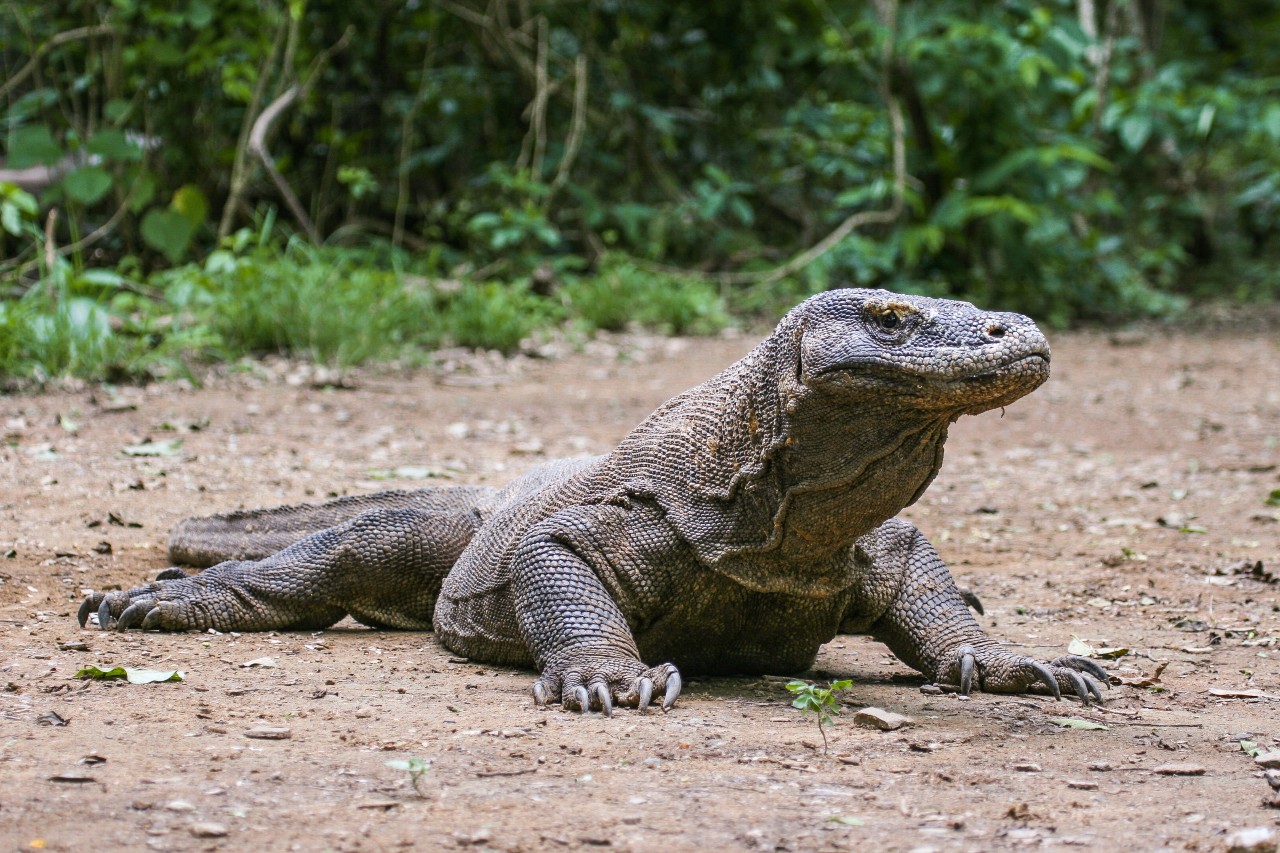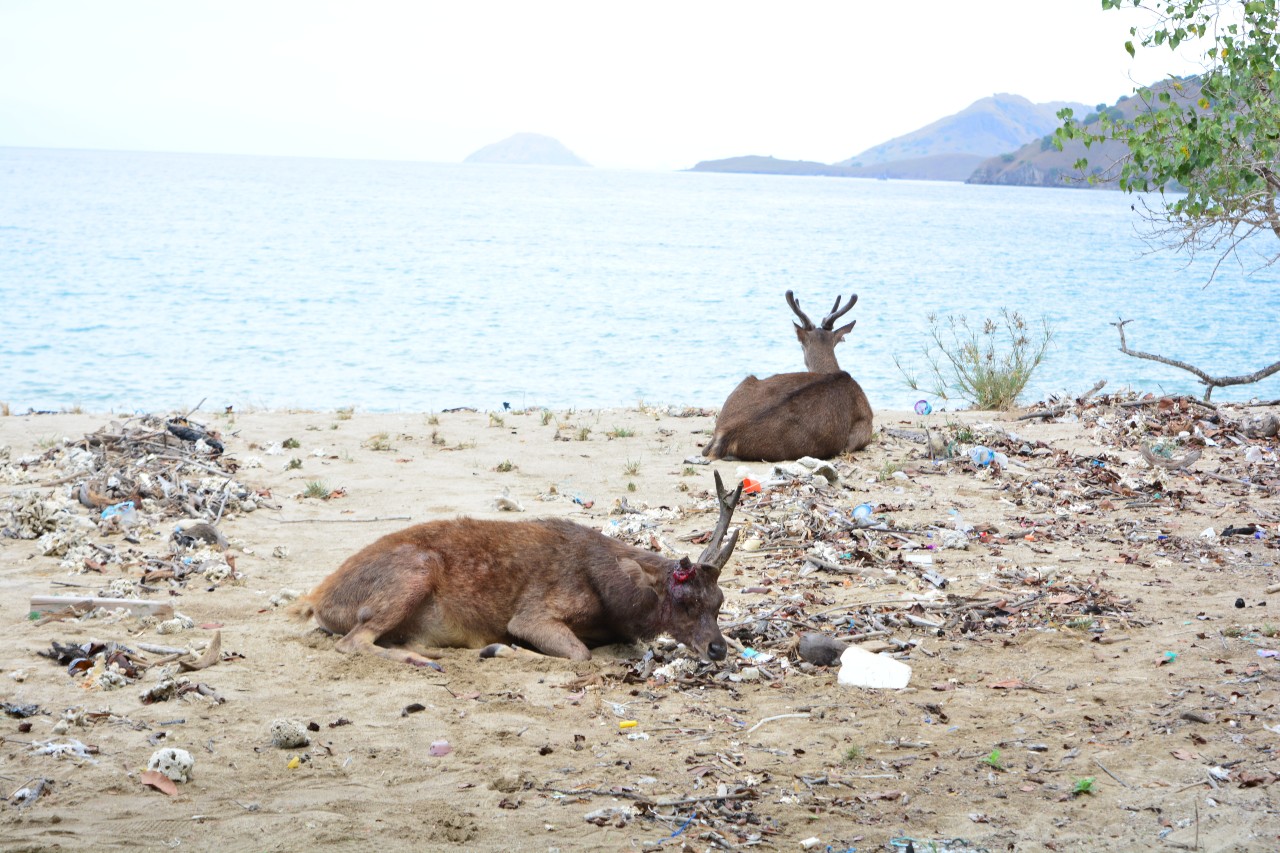Komodo National Park, located in the center of the Indonesian archipelago, between the islands of Sumbawa and Flores, is composed of three major islands (Rinca, Komodo, and Padar) and numerous smaller ones, all of them of volcanic origin. Located at the juncture of two continental plates, this national park constitutes the “shatter belt” within the Wallacea Biogeographical Region, between the Australian and Sunda ecosystems. The property is identified as a global conservation priority area, comprising unparalleled terrestrial and marine ecosystems and covers a total area of 220 km2. The dry climate has triggered specific evolutionary adaptation within the terrestrial flora that range from open grass-woodland savanna to tropical monsoon forest and quasi cloud forest. The rugged hillsides and dry vegetation highly contrast with the sandy beaches and the blue coral-rich waters.
The most remarkable inhabitant of Komodo National Park is the Komodo Lizard (Varanus komodoensis). These giant lizards, with a population of less than 5,000, existing nowhere else in the world, are of great scientific interest, especially for their evolutionary implications. Most commonly known as “Komodo Dragons”, due to its appearance and aggressive behavior, the Komodo Lizard, is the largest living species of lizard, growing to an average length of 2 to 3 meters. The species is the last representative of a relic population of large lizards that once lived across Indonesia and Australia. As well as being home to the Komodo dragon, the Park provides a refuge for many other notable terrestrial species such as the orange-footed scrub fowl, an endemic rat, and the Timor deer. The rich coral reefs of Komodo host a great diversity of species, and the strong currents of the sea attract the presence of sea turtles, whales, dolphins and dugongs.
The park features some of the world’s most diverse coral reefs and is famous for the last remaining habitat of the world’s largest lizard, the Komodo dragon (Varanus komodoensis), which exists nowhere else in the world. Increasing CO2 concentrations in the sea and higher sea surface temperature threaten the existence of the coral reefs. Meanwhile, the sea-level rise is endangering the conservation of mangrove forests in the park and threatening turtle-nesting beaches. The warmer environment is also affecting the sea turtles, since the incubation temperature of eggs co-determines the sex of hatchlings, with higher temperatures causing a predominance of female hatchlings. The isolated Komodo Lizard population and very dry islands are vulnerable to increased rainfall that could inundate breeding areas and change the vegetation, making the habitat less hospitable to these magnificent lizards.
Coral reef tourism has a global value of US$36 billion per year. Over 30% of the world’s reefs are valuable to tourism. Indonesia has a thriving coral reef tourism industry and also has the second largest manta ray tourism industry in the world, with an annual value of over $15 million. While coral bleaching events and ocean acidification are well-documented effects of climate change, there are other stressors upon coral reefs that could undermine these valuable tourism industries. Sea level rises, leading to coastal erosion, plus stronger and more frequent storms typical of the current climate, smother and destroy coral reef structures. Heavy rainfall cause land-based pollutants and nutrients to wash into the ocean, resulting in algal blooms and a reduction in available light at reefs. If left unchecked, these complex effects could reduce the value of marine tourism significantly as the quality of world-class Indonesian dive sites and idyllic tourism destinations deteriorate.
The wasteWOIMA® waste-to-energy power plant uses municipal solid waste as fuel thus reducing the need to dump it elsewhere. It is a carbon-neutral solution that simultaneously ensures that waste is recycled into energy efficiently, supports the local waste management practices and promotes climate action by preventing solid waste from generating methane, a greenhouse gas 25 times worse than CO2.
Read more about wasteWOIMA® power plant
Contact WOIMA, if you see yourself as collaboration partner in saving the planet. Ask more about turning waste into wellbeing with WOIMA Circular Economy Solutions.







